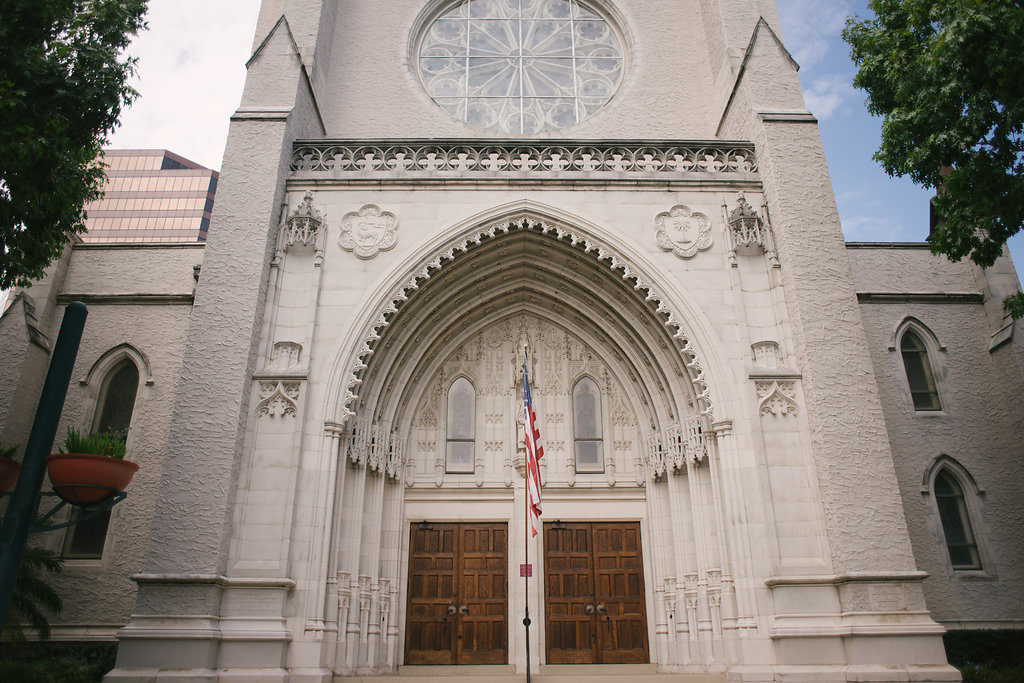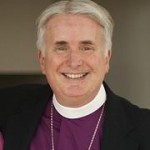Daily Prayer in Anglicanism
The renewal of daily prayer in the lives of every-day Christians “was one of the greatest successes of the English Reformation,” notes James White.[1] It makes sense then, that in Anglicanism the laity, and not just the clergy, make vows to pray.
Just as Bishops, Priests, and Deacons are asked some version of the question, “Will you be faithful in prayer, and in the study of Holy Scripture, that you may have the mind of Christ” in the midst of their ordination vows,[2] so every Christian is asked, “Will you continue in the apostles’ teaching and fellowship, in the breaking of bread, and in the prayers” in the midst of their Baptismal vows.[3]
This article explores the topic of daily prayer in Anglicanism, its history and theology. The best way to examine this topic (as is true for any topic in Anglicanism) is to look at the Anglican liturgy found in The Book of Common Prayer. Particularly it’s the Daily Office (DO) liturgy, perhaps more than any other, that most clearly shows the importance of fixed daily prayer in the life of the Anglican Christian. First we will examine the history of the DO. And then we will discuss how the DO evidences three key components of the Anglican expression of Christianity: Lex Orandi Lex Credendi, Via Media, and the Threefold Rule of Prayer.
The goal of this discussion? To help us pray.
What is the Daily Office?
In the opening words of the BCP’s Morning Prayer liturgy we find this description of the DO:
Dearly beloved, we have come together in the presence of Almighty God our heavenly Father, to set forth his praise, to hear his holy Word, and to ask, for ourselves and on behalf of others, those things that are necessary for our life and our salvation.[4]
In other words…the essential stuff, that’s what the DO contains.
The DO is a rhythmic pattern and practice of scripture reading, praise, petition, confession, and thanksgiving, offered at fixed times each day. It includes some of Christianity’s oldest canticles (songs), and invites a wide-lens view of prayer (for self, city, and world).
The thing is, as R.R. Reno poetically points out, “the Daily Office and its path into the mystery of Christ is far older and more reliable than Anglicanism itself.”[5] That is, it’s a practice that began before Thomas Cranmer and the Protestant Reformation. It’s ancient- something that developed over many years in the undivided Church (the Church of the East and the West). In particular, fixed prayer finds its beginnings in Judaism and then in Christian monasticism. It continued to develop in local parish life up through the Middle Ages, and was given its current form in the days of the English Reformation.[6] This is important: like all Christian doctrine and practice, the DO developed over time, guided by the Holy Spirit, in the life of the Church.
Here’s a quick highlight reel of the DO’s history:
History of the Daily Office
Fixed Prayer in Judaism
"Seven times a day I praise you" the Psalmist says in Ps. 119:164.[7] Prayerbook commentator Marion Hatchet notes, “By the time of Christ, the synagogue liturgy of the word [the Jewish equivalent to the Office) was conducted on at least some weekdays as well as immediately before the Sabbath meal.”[8] While scholars debate which, if any, passages from the New Testament gospels evidence this handshake of fixed prayer between Judaism and Christianity, passages like Luke 4:16-30 seem to suggest that Jesus himself was familiar (and utilized?) some type of fixed schedule of prayer and scripture reading.[9] In other words, organizing one’s day according to fixed prayer times was a part of the Christian faith from its earliest conception in Judaism.
Fixed Prayer in Monasticism
From the third century on, as monastic communities began to develop throughout the Christian world, fixed hours of prayer became more concrete, and more complex. Seven Offices were observed in the every-day life of a monk: Matins, Prime, Terce, Sext, None, Vespers, and Compline.[10] Prayer was the vocation of monks and so, as James White observes, “Monasticism and the Daily Office evolved together, being virtually identified with each other.”[11]
Scholars point to one monk in particular, to evidence the connection between monasticism and the DO: Saint Benedict. One scholar says Benedict “perfected” the DO.[12] And popular liturgist Phyllis Tickle notes how his Rule, written sometime in the 6th Century, “was to become a kind of master template against which all subsequent observance and structuring of the divine hours was to be tested.”[13]
This is why, even today, as liturgical Christians follow the practice of the DO, they themselves invite the benefits of monasticism’s genius of prayer and work and community. Want to be a business man monk? Pray the DO. Want to include silence and scripture reading into the chaos of motherhood? Pray the DO.
Fixed Prayer in Medieval Christianity
Medieval Christianity also left its mark on the DO, deepening its rhythms through systematization (a “gift” Medieval Christianity seems to have given all of Western Theology. Thanks?) In fact, one scholar notes that the DO we have received in the Anglican Prayerbook is, “directly descended from the system of daily services of the Middle Ages known as the Canonical Hours and enshrined in the Breveries of the secular and monastic clergy of the Latin Church.”[14]
Unfortunately, as even some Roman Catholics observe, during this systematizing process the DO began to grow so complex that, “Daily public worship other than observing the Eucharist became an almost exclusively clerical and monastic tradition for many centuries.”[15]
Fixed Prayer in Reformation Christianity
It wasn’t until the Reformation, with the printing press and the passion of the Reformers to place the scriptures back into the hands of the people, that the DO once again became accessible to the common Christian.
Massey summarizes,
It was the genius of…Luther and Cranmer, to see the potential advantage to the Church of making the Daily Offices a means of corporate worship for all the faithful…and, in particular, a vehicle for the recovery of the knowledge of the Holy Scriptures by all the people of God.[16]
In England, Thomas Cranmer took the historic Seven Offices used by the monastics, combined it with some of the Medieval traditions of prayer, included some Eastern Christian prayers and practices, and compressed those ingredients into two main services of Morning and Evening Prayer. The result? Anglicans have prayed some version of Cranmer’s DO ever since.
Summary
In telling the story of the DO, it’s important to see that it has, like all aspects of the Church as living organism, developed and matured over time. None of the historic expressions of the DO should be shunned for this reason alone. Each in its time contributed to what we have today, and that lends to richness and depth. The liturgy of the DO in the Book of Common Prayer represents 2,000 years of Church history, theology, and practice. That is a true gift!
The Theology of the Daily Office
In Anglicanism the DO reflects not only an historical Christian identity, but also an historical Christian theology. Three defining features of the Anglican theological tradition are put on display in the practice of the DO: Lex Orandi Lex Credendi, Via Media, and The Threefold Rule of the Church.[17]
Lex Orandi Lex Credendi
Lex Orandi Lex Credendi means, loosely, the rule of prayer is the rule of faith. Liturgist Leonel Mitchell explains it this way: “[the] dependence of theology upon worship has been expressed in the Latin maxim lex orandi lex credenda, or more accurately legem credenda lex statuat supplicandi, which means that the way we pray determines the way we believe.[18] In the Anglican tradition, dogma and practice flow from prayer, even as prayer flows from dogma and practice. This is precisely why Anglicanism’s primary document is a book of prayer, and not a catechism, or confession of faith. (Note: We do have a catechism and a list of article of faith, but these are both placed within a book of prayer…in the back). This feature of Anglicanism cannot be overstated. Unlike other iterations of the (Continental) Reformation, Anglicanism is NOT summarized in a confessional document. Nor is it summarized or defined by a Magisterium, as in Roman Catholicism. Instead, Anglicans believe what they pray. That daily prayer would be a vow made by every Anglican makes sense for this reason. The DO is fundamental to Anglicanism’s identity and theology.
Via Media
The second feature on display is summarized by the Latin phrase, Via Media, meaning, “the middle way.” This is the notion that Anglicanism is both Catholic and Reformed.[19] Since the DO includes a great deal of scripture reading, it shows its Protestant heritage. But the DO also affirms the traditions of prayer through Christian history, utilizing forms and prayers that go back to the First Century. It’s Catholic! Put simply, in praying the DO, Protestants will feel at home. There is a lot of scripture reading. But Catholics will also feel at home (as will Eastern Orthodox Christians) when they sing the Magnificat or pray Saint Chrysostom’s Prayer.
The Threefold Rule
Anglican author Martin Thornton defines the Threefold Rule of Prayer as, “Mass, Office, private prayer.”[20] These categories provide a helpful understanding for how the prior two Latin phrases work themselves out in Anglicanism. The Threefold Rule asserts that the DO is important, but only as it finds its place within the Christians canon of prayer: private devotion and corporate worship. The DO is one of three essential aspects of prayer in Anglicanism.
In essence, the DO doesn’t stand alone. It is as strong as the Mass and Private Devotions surrounding it. The DO fits into this threefold expression of prayer the way the Holy Spirit fits into the Trinity. It works together with the other kinds of prayer to shape a whole Christian.
Conclusion
The Anglican way of being a Christian is indissolubly linked with daily prayer, as evidenced by its book of prayers, particularly the liturgy of the DO. This isn’t new, or even 500 years old! It’s a practice rooted deep in the Church all the way back into the Old Testament. As such it has developed and deepened over time throughout the undivided Church. Roman Catholics and Eastern Orthodox Christians also pray a version of the DO (with some similar prayers!).
I love this aspect of Anglicanism and pray this discussion inspires you (and me) to engage it more.
[1] James White, Protestant Worship, (Louisville: Westminster/John Knox, 1989), 103.
[2] Episcopal Church. The Book of Common Prayer and Administration of the Sacraments and Other Rites and Ceremonies of the Church : Together with the Psalter or Psalms of David According to the Use of the Episcopal Church, (New York: Seabury Press, 1979), 518.
[3] Ibid., 304.
[4] Ibid., 79.
[5] R.R. Reno, The Ruins of the Church, (Grand Rapids: Brazos, 2002), 151.
[6] Leonel Mitchell has a good overview of the history of the Office in Leonel Mitchell, Praying Shapes Believing, (Harrisburg: Morehouse, 1985), 37-39.
[7] James White, Introduction to Christian Worship, (Nashville: Abingdon Press, 1990), 124.
[8] Marion Hatchett, Commentary On The American Prayer Book, (New York: The Seabury Press, 1980), 89.
[9] Leon Morris, The New Testament and the Jewish Lectionaries, (London: The Tyndale Press, 1964), 14-15.
In discussing Judaism’s role in forming Christian prayer James White posits what we may conclude at the very least, that while “Our knowledge of the Daily worship of the earliest Christians is meager…Apparently, a variety of Jewish customs of set prayers at set times had a strong appeal.” James White, Introduction to Christian Worship, (Nashville: Abingdon, 1990), 123.
[10] Marion Hatchett, Commentary On the American Prayer Book, (New York: The Seabury Press, 1980), 90. See also James White, Introduction to Christian Worship, (Nashville: Abingdon, 1990), 128.
[11] James White, Introduction to Christian Worship, (Nashville: Abingdon, 1990), 128.
[12] Massey Hamilton Shepherd, The Oxford American Prayer Book Commentary, (New York: Oxford University Press, 1950), 1.
[13] Phyllis Tickle, A Brief History of Fixed Hour Prayer, http://www.phyllistickle.com/fixed-hour-prayer.
[14] Ibid.
[15] James White, Introduction to Christian Worship, (Nashville: Abingdon Press, 1990), 125.
[16] Massey Hamilton Shepherd, The Oxford American Prayer Book Commentary, (New York: Oxford University Press, 1950), 1.
[17] While no single source uses these phrases in precisely this way, see helpful overviews of each in the following. For Lex Orandi Lex Credendi see W. Taylor Stevenson, “Lex Orandi - Lex Credendi” in The Study of Anglicanism, ed. Stephen Sykes, John Booty, and Jonathan Knight, (Philadelphia: SPCK/Fortress Press, 1988), 187. Though a debated concept, the study of Anglicanism as a Via Media is best begun with John Henry Newman, The Via Media of The Anglican Church: Illustrated in Lectures, Letter, and Tracts Written Between 1830-1841, (London: Longmans, Green, & Co, 1891). See in particular John Henry Newman, “Via Media Vol. 1 No. 38” in Tracts For the Times, http://anglicanhistory.org/tracts/tract38.html. For a discussion on the Church’s Threefold Rule of prayer see Martin Thornton, Christian Proficiency, (London: SPCK, 1959).
[18] Leonel Mitchell, Praying Shapes Believing, (Harrisburg: Morehouse, 1985), 1.
[19] For a review of this aspect of Anglican identity that is as entertaining as it is informative, see John R. H. Moorman’s chapter “Golden Mean or Leaden Mediocrity” in John R. H. Moorman, The Anglican Spiritual Tradition, (Illinois: Templegate Publishers, 1983), 54-92.
[20] Martin Thornton, Christian Proficiency, (London: SPCK, 1959), 20.













